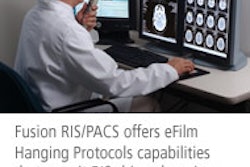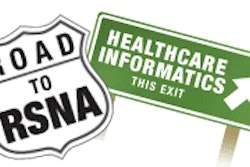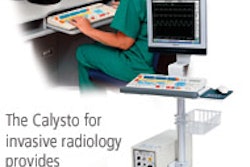Radiologists in private practice and academia alike are facing an ever-growing volume of patients. Managing cases for either clinical follow-up or teaching purposes adds precious time to workflow and decreases throughput.
But researchers from the department of radiology at Beth Israel Deaconess Medical Center and Harvard Medical School in Boston are hoping to cut their management time with an automated platform-independent system that begins tracking a case as soon as a keyword is dictated into the report.
The most ubiquitous method of tracking cases is to use an old-fashioned notepad. The drawback to this technique is that the written information has to be transferred to a digital format for clinical tracking or creating a teaching file. For follow-up studies on the same patient, the entire process has to be repeated.
"Although there is nothing wrong with using a little piece of paper to remember cases, losing them may trigger Health Insurance Portability and Accountability Act (HIPAA) issues," wrote Chun-Shan Yam, Ph.D., and colleagues in the American Journal of Roentgenology (January 2005, Vol. 184:1, pp. 343-346).
The researchers devised an HL7 receiving system to collect radiology reports in real time from the hospital information system (HIS). The system infrastructure was designed by a 10-member committee, seven from the radiology department and three from the hospital HIS system.
The reports are dictated into the department's RIS, sent to the HIS, and a copy is sent to an HL7 receiver module in the radiology department's system. The researchers used LinkTool (Link Medical Computing, Needham, MA), a commercially available software application, as the HL7 receiver.
The group devised a data parser module that determines if a report should be extracted on the basis of its keyword field content and a patient's identification number. The reports are stored in a folder for the radiologist in Microsoft Excel or Access format, and access is restricted to intranet-authenticated users.
"The setup of the HL7 receiver is simple," the authors wrote. "One needs to provide the IP address and the port number. A similar setup is required on the HIS at the data center to send us the reports."
Because the reports adhere to the HL7 standard, the information contained in the header, such as destination name, study description, patient name, ID, referring physician, reviewing physician, accession number, date of service, time of study, and so on are easily decoded for parsing. The group built its data parser using the Microsoft Visual Basic development tool, and uses it to extract the report content by scrubbing the header and footer messages.
Once the patient ID value for a study is identified as a tracking case, all existing reports and any future reports for that patient ID will be automatically collected by the tool. In the case of teaching files, the system transfers all tracked reports to a departmental teaching file server.
Any system that can perform text search, such as Mac OS, Linux, and Unix, can be programmed to perform the keyword and patient ID search, according to the researchers. Because the system is based on TCP/IP communications, any operating system that uses that protocol can use the researcher's method to collect and monitor radiology reports. In addition, authenticated users can access data from the report collection via a Web browser.
"For clinical applications, in one example, we use this system to collect potential interventional radiology consulting cases and to notify the on-call radiologists via e-mail," the authors wrote.
The team began running the automated tracking system to collect reports in August 2002. They reported five shutdowns totaling 20-hours duration -- two because of network errors at the data center during equipment upgrades and three due to installation of Microsoft security patches. A built-in utility at the HIS data center ensured that all queued reports were retransferred and no report was lost.
The authors commented that more than 1.3 million reports, both preliminary and final, have been received. Because the system contains all the RIS reports, the group is looking at developing further capabilities such as extending it for data mining and quality assurance.
"The advantage of using an automated system is that it streamlines clinical workflow, lessens HIPAA concerns, and eliminates human errors in writing and typing," they noted.
By Jonathan S. Batchelor
AuntMinnie.com staff writer
January 18, 2005
Related Reading
HIPAA security: IHE guidelines help ensure compliance, November 26, 2004
Rads urged to standardize reporting of vertebral fractures, November 23, 2004
Technology, technique help ease radiologist shortage, November 2, 2004
Optimizing alternative reporting strategies, July 16, 2004
Imaging reports also benefit from improved signal-to-noise ratio, May 3, 2004
Copyright © 2005 AuntMinnie.com



















